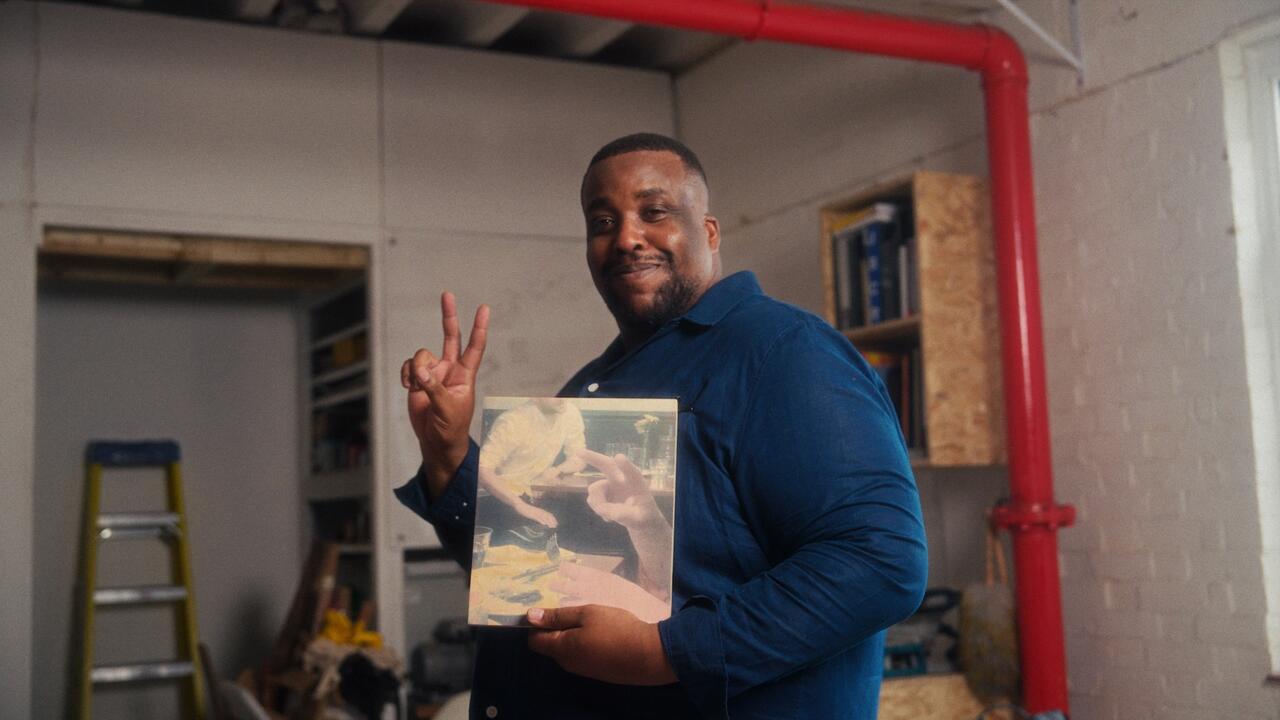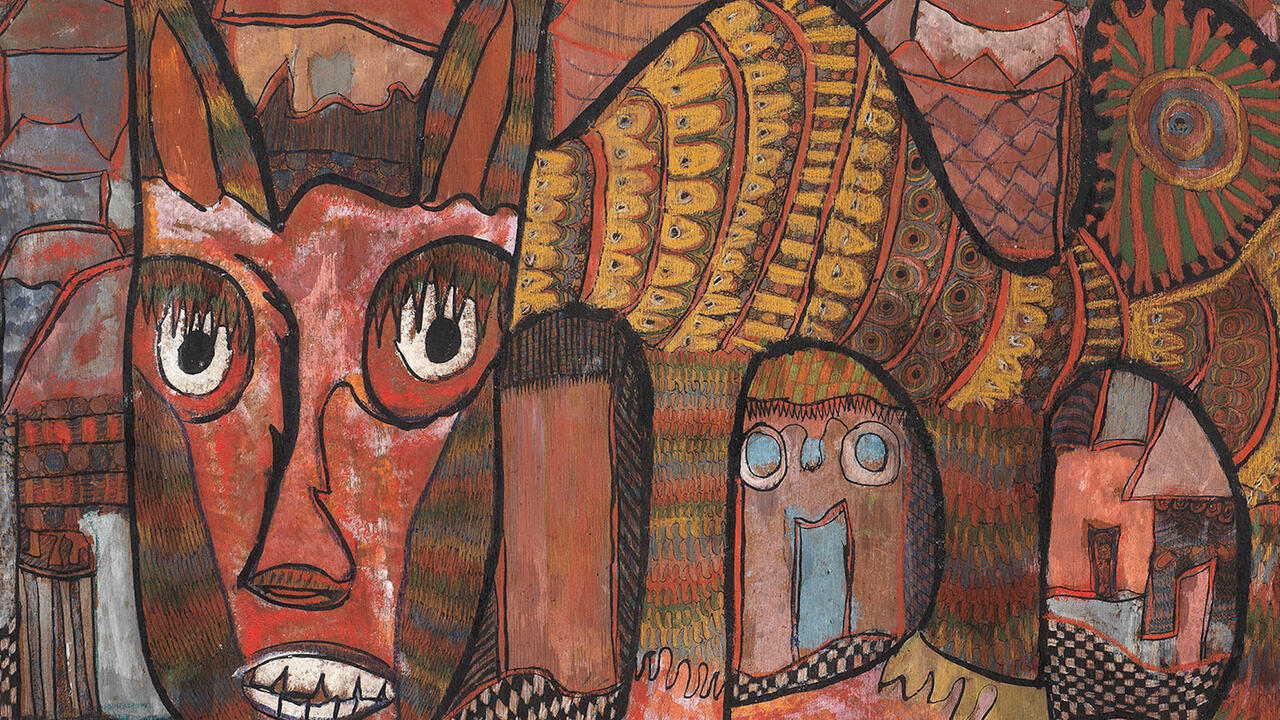Gitte Villesen
*
*
 For this show in St Gallen, Danish artist Gitte Villesen showed two videos, both of which at first glance suggested the influence of Dogma cinema in their simple, hand-held camerawork and dialogue-focused editing. In Two Movies by Jessie (2003) a 32-year-old transsexual talked about her ideas for two films, while The Building - The Bikeshop - Andy's Furniture (2001) documented daily life in Dan Peterman's 'Blackstone Building', just outside Chicago. Villesen first came across Jessie Tandberg in a magazine article. Jessie had been refused entrance to a night-club in the small city of Herning, and when she complained, was thrown into a prison cell to dry out. Jessie plans to use the day-to-day discrimination she experiences as material for her, as yet unrealized, film projects. Interviewed by Villesen, Jessie describes how the eye of a camera will glide through an apartment window and film her in the bathroom. She will then be filmed leaving the house for the first time in her new identity, in the streets of the small city, sensing that police cars, a vicar and an ever-increasing group of residents are following her; yet no matter how often she turns around, no one is there. When she seeks refuge in a house, her pursuers become real and stab her to death. Jessie narrates this idea from the back seat of a car while Villesen films her from the front passenger seat. After watching the video for a while, it becomes clear that Jessie enjoys both the luxury of being driven around and the feeling that she is at the driver's mercy. For the second film idea Villesen takes Jessie to the seaside and asks her to improvise a narrative on the themes of ocean and beach. Jessie imagines dwarfs living in bunkers under the dunes, until they eventually die in a battle with non-dwarfs. The only overt reference to cinema in Two Movies by Jessie is the wide-screen format. The black bars that appear to adjust the format to the TV monitor move upwards. Between Jessie's two stories they form a block that splits the image horizontally, as if the black upper half was pressing the video down, like the oppressive social conditions that trigger Jessie's imaginative storylines. Villesen's second video, The Building - The Bikeshop - Andy's Furniture, consists of three synchronized video projections documenting the artist Dan Peterman's neighbourhood. Since the end of the 1980s Peterman has been successfully combining social and art projects. In artistic terms the building materials he manufactures out of recycled plastics function as the surplus value of symbolic capital: the context of the art world allows Peterman's idealistic recycling to serve as a role model beyond its immediate sphere of influence. However, Villesen's main focus is on Peterman's Chicago community. We learn more about Andy the chair designer, the employees and the kids from the bike shop than we do about Peterman. Spread across the three projections, Villesen's documentary sequences appear either on their own or alongside other fragments of reportage. The effect is to define the borders between, for instance, the vegetable garden and the metal workshop, and at the same time to dissolve them. Four additional image/text boards relate the interviews to one another in the form of graphics that emphasize social connections between the characters. The fact that the bike shop burnt down in April 2001 strengthens the work's character as a kind of archaeology of Peterman's creation of immaterial - and material - values, alternating between failure and success. Villesen does not simply exhibit reality, but relates that reality to the system of art production, thus creating a kind of reciprocal relationship between the two. Her video works at St Gallen showed how art, the supposed epitome of self-determined production, is mirrored by the unconventional everyday events that take place all around it, while at the same time the promise of public attention held out by the art context has a manipulative effect on the 'ordinary' life being recorded.
For this show in St Gallen, Danish artist Gitte Villesen showed two videos, both of which at first glance suggested the influence of Dogma cinema in their simple, hand-held camerawork and dialogue-focused editing. In Two Movies by Jessie (2003) a 32-year-old transsexual talked about her ideas for two films, while The Building - The Bikeshop - Andy's Furniture (2001) documented daily life in Dan Peterman's 'Blackstone Building', just outside Chicago. Villesen first came across Jessie Tandberg in a magazine article. Jessie had been refused entrance to a night-club in the small city of Herning, and when she complained, was thrown into a prison cell to dry out. Jessie plans to use the day-to-day discrimination she experiences as material for her, as yet unrealized, film projects. Interviewed by Villesen, Jessie describes how the eye of a camera will glide through an apartment window and film her in the bathroom. She will then be filmed leaving the house for the first time in her new identity, in the streets of the small city, sensing that police cars, a vicar and an ever-increasing group of residents are following her; yet no matter how often she turns around, no one is there. When she seeks refuge in a house, her pursuers become real and stab her to death. Jessie narrates this idea from the back seat of a car while Villesen films her from the front passenger seat. After watching the video for a while, it becomes clear that Jessie enjoys both the luxury of being driven around and the feeling that she is at the driver's mercy. For the second film idea Villesen takes Jessie to the seaside and asks her to improvise a narrative on the themes of ocean and beach. Jessie imagines dwarfs living in bunkers under the dunes, until they eventually die in a battle with non-dwarfs. The only overt reference to cinema in Two Movies by Jessie is the wide-screen format. The black bars that appear to adjust the format to the TV monitor move upwards. Between Jessie's two stories they form a block that splits the image horizontally, as if the black upper half was pressing the video down, like the oppressive social conditions that trigger Jessie's imaginative storylines. Villesen's second video, The Building - The Bikeshop - Andy's Furniture, consists of three synchronized video projections documenting the artist Dan Peterman's neighbourhood. Since the end of the 1980s Peterman has been successfully combining social and art projects. In artistic terms the building materials he manufactures out of recycled plastics function as the surplus value of symbolic capital: the context of the art world allows Peterman's idealistic recycling to serve as a role model beyond its immediate sphere of influence. However, Villesen's main focus is on Peterman's Chicago community. We learn more about Andy the chair designer, the employees and the kids from the bike shop than we do about Peterman. Spread across the three projections, Villesen's documentary sequences appear either on their own or alongside other fragments of reportage. The effect is to define the borders between, for instance, the vegetable garden and the metal workshop, and at the same time to dissolve them. Four additional image/text boards relate the interviews to one another in the form of graphics that emphasize social connections between the characters. The fact that the bike shop burnt down in April 2001 strengthens the work's character as a kind of archaeology of Peterman's creation of immaterial - and material - values, alternating between failure and success. Villesen does not simply exhibit reality, but relates that reality to the system of art production, thus creating a kind of reciprocal relationship between the two. Her video works at St Gallen showed how art, the supposed epitome of self-determined production, is mirrored by the unconventional everyday events that take place all around it, while at the same time the promise of public attention held out by the art context has a manipulative effect on the 'ordinary' life being recorded.















